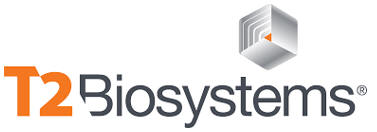7
Costs and expenses, excluding costs of product revenue, were $11.0 million, compared to $10.5 million in last year’s first quarter and were at themid-point of guidance. Total costs and expenses include depreciation andnon-cash stock compensation of $2.6 million in the first quarter compared to $2.0 million in last year’s first quarter, an increase primarily due to the vesting of performance-based RSUs.
Operating margins were a loss of $13.6 million, compared to a loss of $11.4 million in last year’s first quarter.
Net interest expense and other income was $1.6 million compared to $1.5 million in last year’s first quarter.
Our net loss was $15.1 million, ($0.34) per share, compared to a net loss in last year’s first quarter of $12.9 million, ($0.36) per share. Weighted average shares outstanding were 44.3 million compared to 36.0 million in last year’s first quarter.
Our cash and cash equivalents were $37.2 million at March 31, 2019. We believe our cash and financing sources are sufficient through the first half of 2020.
2019 Outlook:
The following forward-looking statements reflect estimates based on information as of May 2, 2019 and are subject to uncertainty.
For the full year 2019, we are reiterating our financial guidance and providing second quarter guidance as follows:
Overall, we expect total revenue to double in 2019, with product revenue expected to grow over 100%. For the second quarter of 2019, we expect total revenue in the range of $1.8 million to $2.1 million. Second quarter product revenue is expected to be in the range of $1.5 million to $1.8 million. We expect revenue to continue to ramp over the course of the year reflecting continued adoption of T2Bacteria and T2Candida Panel test sales and expanding T2Dx® Instruments reagent rentals and sales in the U.S. and internationally.
For new contracts, we expect in 2019 to close contracts for the placement of 70 to 80 instruments, roughly double the number in 2018. This includes 12 to 14 contracts expected in the second quarter.
As you consider product revenue growth, please keep in mind the following guidelines that we have outlined on prior calls:
It typically takes new instruments an average of three to six months to go live and patient testing commences as hospitals are required to validate any new diagnostic tests and instruments. During this period, the company typically receives nominal revenue unless the instrument has been purchased by the hospital, which in the United States occurs about 15% of the time. International distributors typically purchase instruments at a 30% discount off the list price of $100,000 per instrument.
